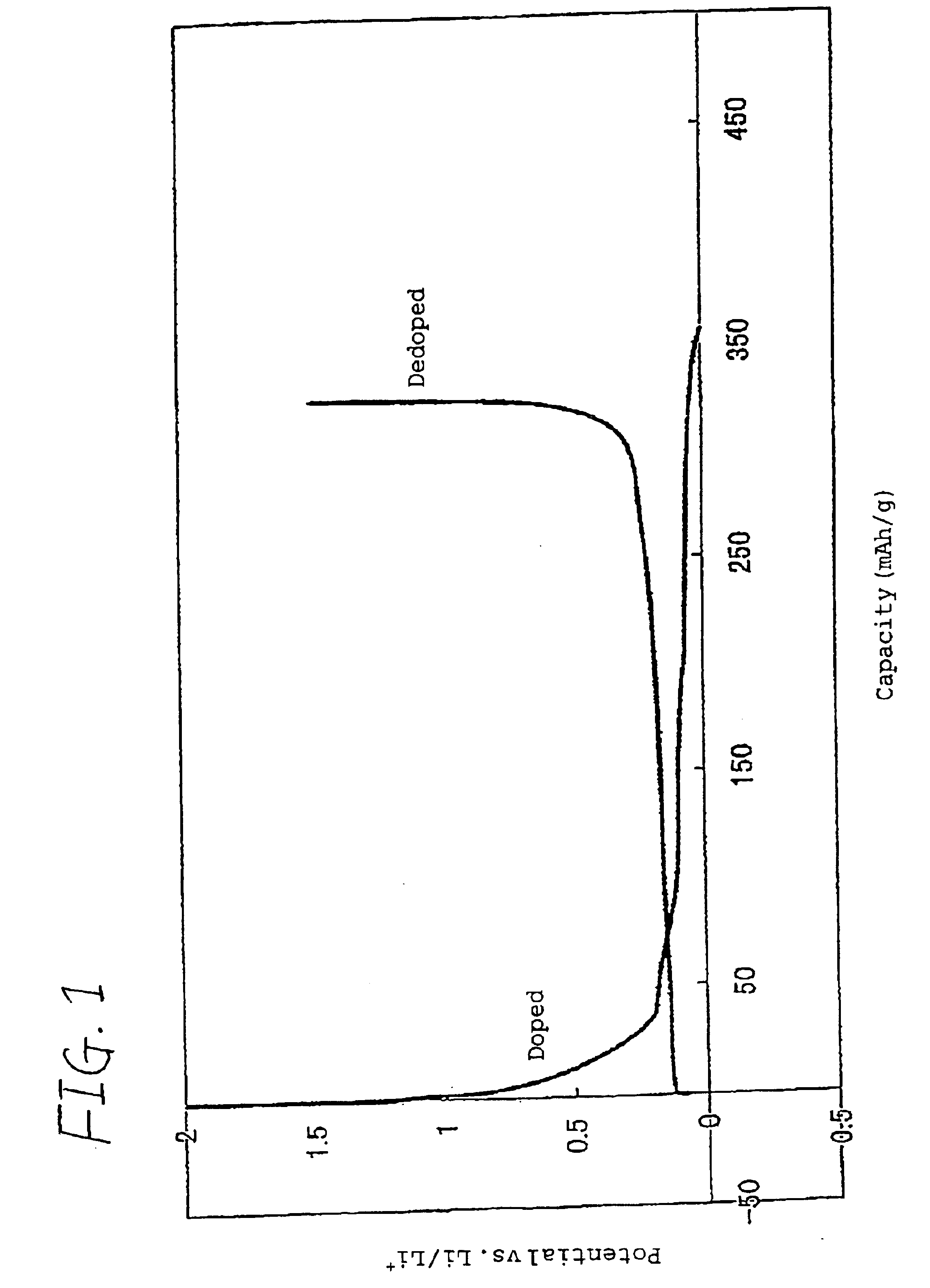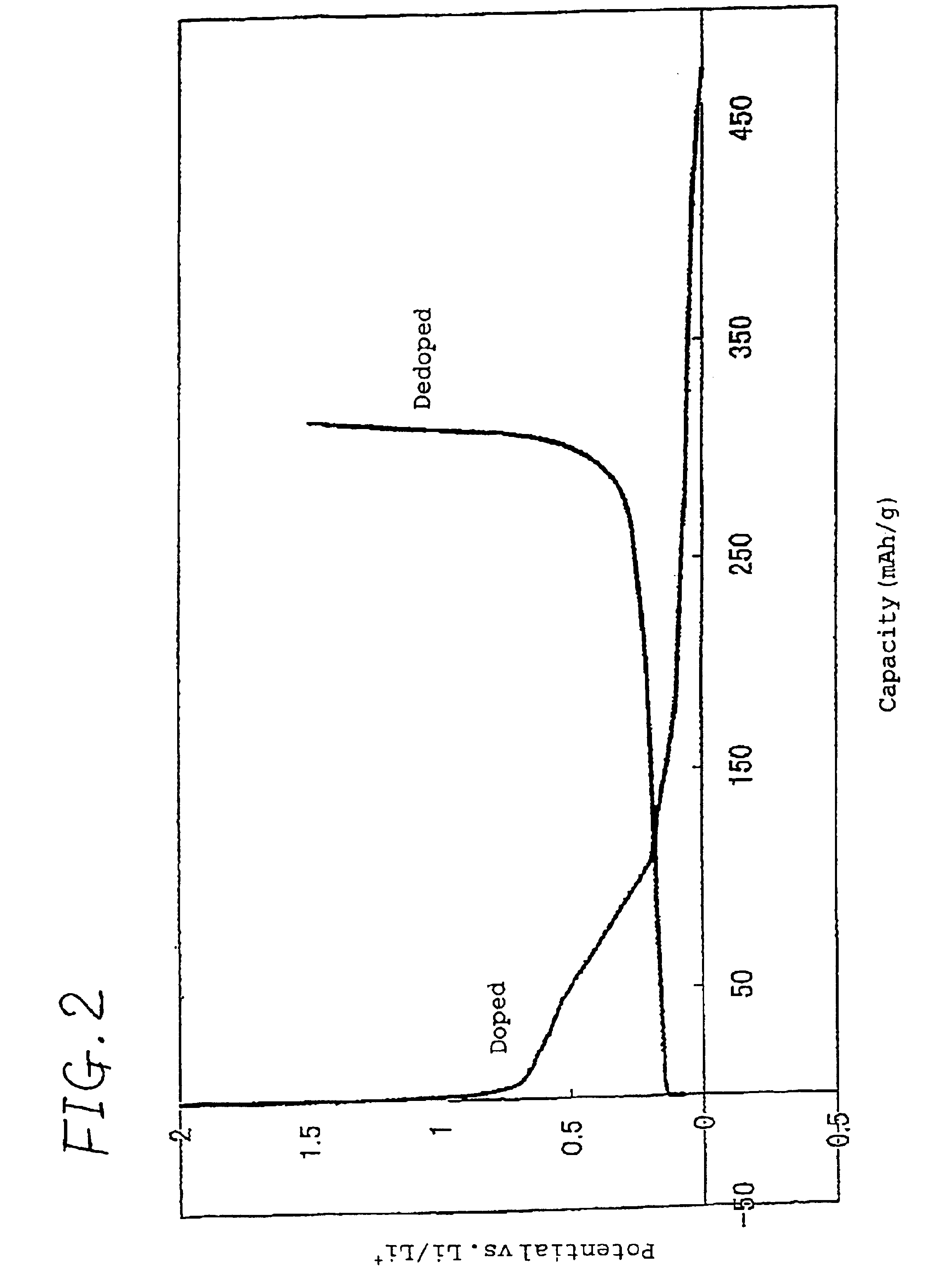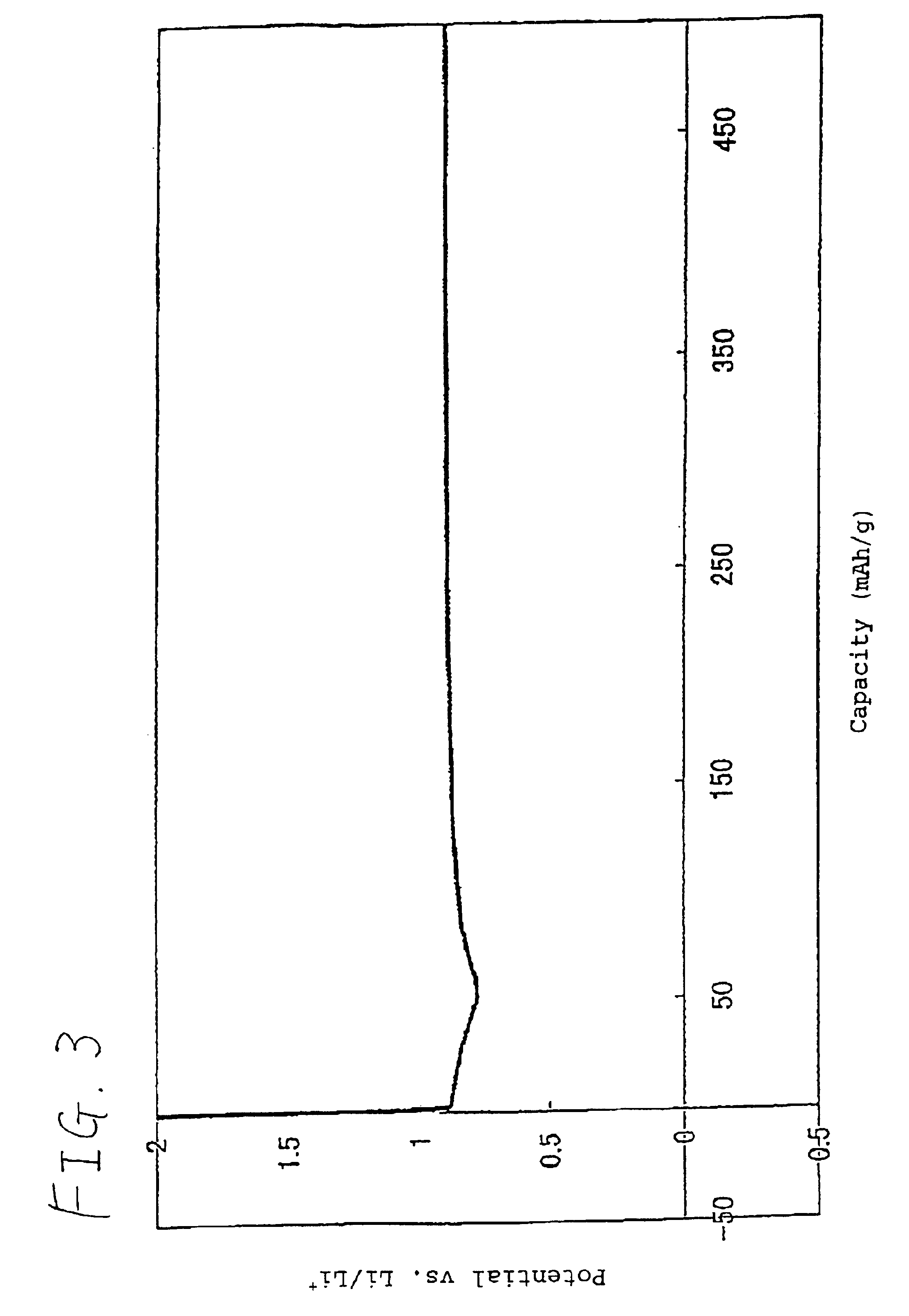Nonaqueous electrolytic solution type secondary battery
a technology of nonaqueous electrolyte and secondary battery, which is applied in the direction of non-aqueous electrolyte cells, cell components, electrochemical generators, etc., can solve the problems of short circuit in the battery, drop in charge and discharge efficiency, deterioration of cycle performance, etc., and achieve low electrical conductivity , the effect of deteriorating the battery performan
- Summary
- Abstract
- Description
- Claims
- Application Information
AI Technical Summary
Benefits of technology
Problems solved by technology
Method used
Image
Examples
example 1
[0055]An electrolyte was prepared by dissolving a vinylethylene carbonate in a propylene carbonate in an amount of 5% by weight, and then dissolving thoroughly dried lithium hexafluorophosphate (LiPF6) as a solute in the solution in an amount of 1 mol / l in dried argon atmosphere.
[0056]To 94 parts by weight of KS-44 (trade name; produced by Timcal (??) Co., Ltd.), which is an artificial graphite powder having a d value of 0.336 nm on lattice plane (002 plane) as determined by X-ray diffractometry, a crystalline size (Lc) of not lower than 100 nm (264 nm), an ash content of 0.04% by weight, a median diameter of 17 μm as determined by laser diffractometry / scattering method, a BET process specific surface area of 8.9 m2 / g, an intensity R (=IB / IA) of 0.15 wherein IA is the peak intensity in the range of from 1,580 to 1,620 cm−1 and IA is the peak intensity in the range of from 1,350 to 1,370 cm−1 as determined by Raman spectroscopy, and a peak half width of 22.2 cm−1 in the range of from...
example 2
[0059]A coin type half cell was prepared in the same manner as in Example 1 except that an electrolyte prepared by dissolving a vinylethylene carbonate in a 1:1 (by volume) mixture of ethylene carbonate and diethyl carbonate in an amount of 2% by weight, and then dissolving LiPF6 in the solution in an amount of 1 mol / l was used.
example 3
[0070]To 85 parts by weight of LiCoO2as a positive active material were added 9 parts by weight of a polyvinylidene fluoride KF-1000 (trade name; produced by Kureha Chemical Industry Co., Ltd.). The mixture was then dispersed with N-methyl-2-pyrrolidone to make a slurry. The slurry was uniformly applied to an aluminum foil having a thickness of 20 μm as a positive electrode current collector, dried, and then punched into a disk having a diameter of 12.5 mm to prepare a positive electrode.
[0071]To 95 parts by weight of KS-44 (trade name; produced by Timcal (??) Co., Ltd.), which is an artificial graphite powder having a d value of 0.336 nm on lattice plane (002 plane) as determined by X-ray diffractometry, a crystalline size (Lc) of not lower than 100 nm (264 nm), an ash content of 0.04% by weight, a median diameter of 17 μm as determined by laser diffractometry / scattering method, a BET process specific surface area of 8.9m2 / g, an intensity R (=IB / IA) of 0.15wherein IA is the peak in...
PUM
| Property | Measurement | Unit |
|---|---|---|
| flash point | aaaaa | aaaaa |
| relative dielectric constant | aaaaa | aaaaa |
| melting point | aaaaa | aaaaa |
Abstract
Description
Claims
Application Information
 Login to View More
Login to View More - R&D
- Intellectual Property
- Life Sciences
- Materials
- Tech Scout
- Unparalleled Data Quality
- Higher Quality Content
- 60% Fewer Hallucinations
Browse by: Latest US Patents, China's latest patents, Technical Efficacy Thesaurus, Application Domain, Technology Topic, Popular Technical Reports.
© 2025 PatSnap. All rights reserved.Legal|Privacy policy|Modern Slavery Act Transparency Statement|Sitemap|About US| Contact US: help@patsnap.com



